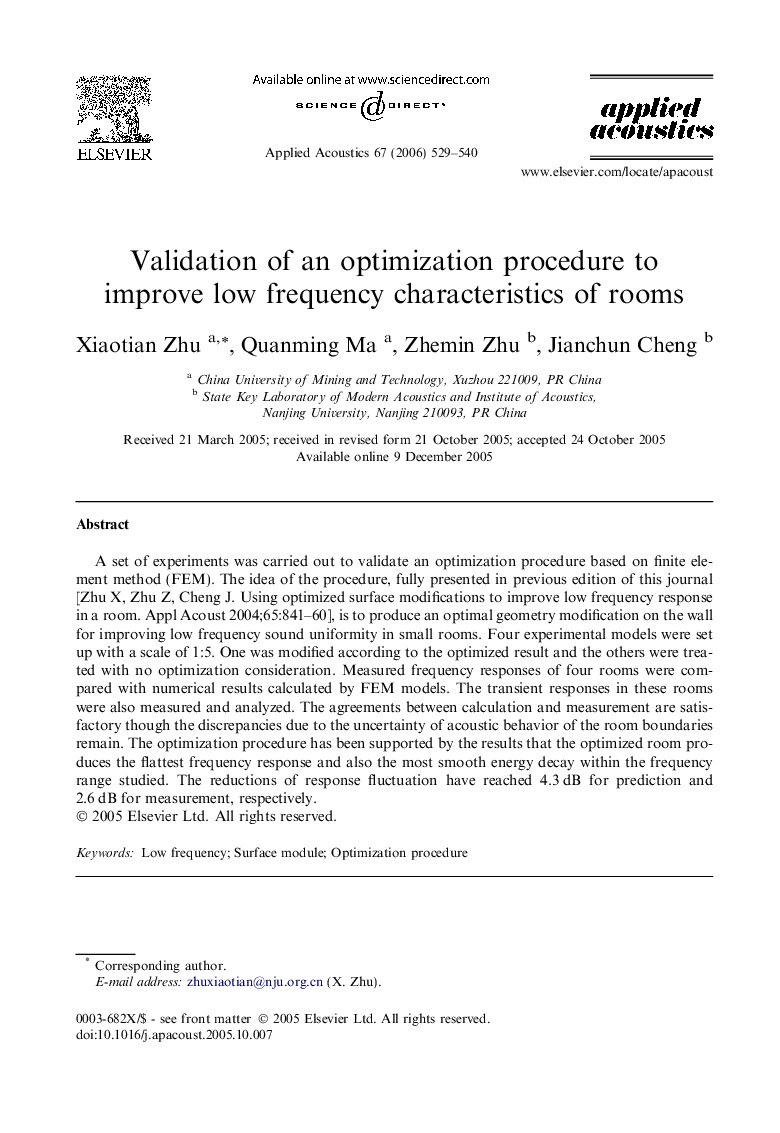| Article ID | Journal | Published Year | Pages | File Type |
|---|---|---|---|---|
| 753871 | Applied Acoustics | 2006 | 12 Pages |
A set of experiments was carried out to validate an optimization procedure based on finite element method (FEM). The idea of the procedure, fully presented in previous edition of this journal [Zhu X, Zhu Z, Cheng J. Using optimized surface modifications to improve low frequency response in a room. Appl Acoust 2004;65:841–60], is to produce an optimal geometry modification on the wall for improving low frequency sound uniformity in small rooms. Four experimental models were set up with a scale of 1:5. One was modified according to the optimized result and the others were treated with no optimization consideration. Measured frequency responses of four rooms were compared with numerical results calculated by FEM models. The transient responses in these rooms were also measured and analyzed. The agreements between calculation and measurement are satisfactory though the discrepancies due to the uncertainty of acoustic behavior of the room boundaries remain. The optimization procedure has been supported by the results that the optimized room produces the flattest frequency response and also the most smooth energy decay within the frequency range studied. The reductions of response fluctuation have reached 4.3 dB for prediction and 2.6 dB for measurement, respectively.
